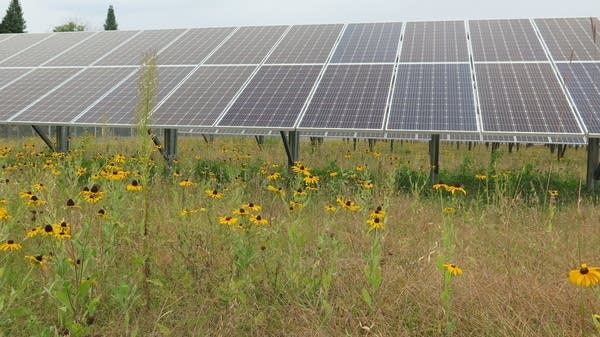Here comes the sun: Solar schools project launches in central Minn.

Pollinator-friendly plants grow at the site of the solar array at Pine River-Backus High School in Pine River.
Elizabeth Dunbar | MPR News
Go Deeper.
Create an account or log in to save stories.
Like this?
Thanks for liking this story! We have added it to a list of your favorite stories.


